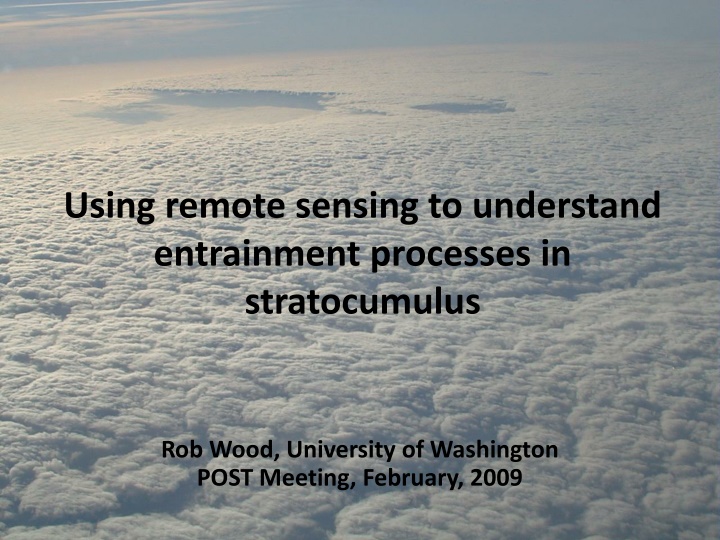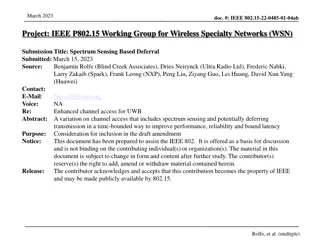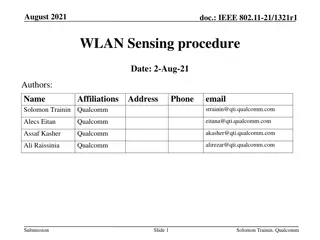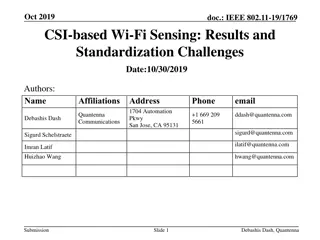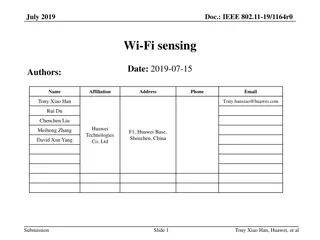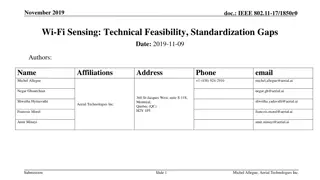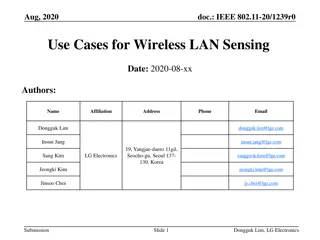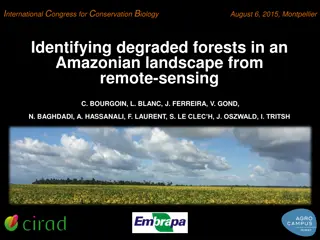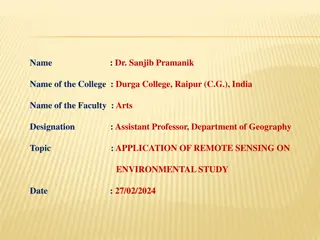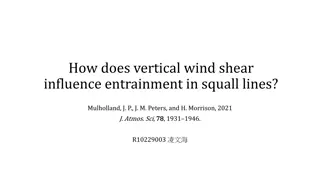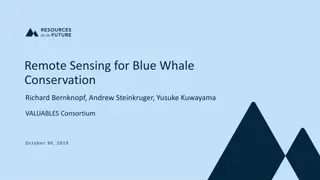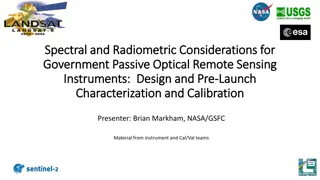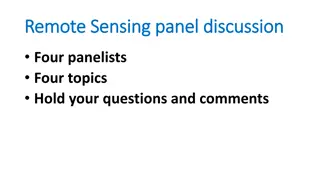Using Remote Sensing for Entrainment Processes
This presentation delves into utilizing remote sensing techniques to analyze entrainment processes in stratocumulus clouds. The research includes motivating factors, methodology, and results derived from integrative approaches using satellite observations and reanalysis data. The focus is on estimating entrainment rates and understanding the structure of marine boundary layer clouds.
Download Presentation

Please find below an Image/Link to download the presentation.
The content on the website is provided AS IS for your information and personal use only. It may not be sold, licensed, or shared on other websites without obtaining consent from the author.If you encounter any issues during the download, it is possible that the publisher has removed the file from their server.
You are allowed to download the files provided on this website for personal or commercial use, subject to the condition that they are used lawfully. All files are the property of their respective owners.
The content on the website is provided AS IS for your information and personal use only. It may not be sold, licensed, or shared on other websites without obtaining consent from the author.
E N D
Presentation Transcript
Using remote sensing to understand entrainment processes in stratocumulus Rob Wood, University of Washington POST Meeting, February, 2009
Outline Motivation MBL depth estimates Large scale forcings from satellite (humidity, surface divergence) Combination to estimate entrainment rate
Motivation From Stevens (2002, 2007) Entrainment efficiency = 1 Entrainment efficiency = 1/2
MBL depth, entrainment and decoupling Integrative approach to derive MBL and cloud properties in regions of low cloud Combines satellite remote sensing observations from MODIS/GOES and TMI/AMSR with reanalysis from NCEP and climatology from COADS Results in estimates of MBL depth and decoupling (and climatology of entrainment)
Methodology Independent observables: LWP, Ttop, SST Unknowns: zi, q (= ) Use COADS climatological surface RH and air- sea temperature difference Use NCEP reanalysis free-tropospheric temperature and moisture Iterative solution employed to resulting non- linear equation for zi
Mean MBL depth (Sep/Oct 2000) NE Pacific SE Pacific
Mean decoupling parameter q Decoupling scales well with MBL depth
q vs zi-zLCL POST Cases
Deriving mean entrainment rates Use equation: we = u zi + ws Estimate ws from NCEP reanalysis Estimate u zi from NCEP winds and two month mean zi
Mean entrainment rates Entrainment rate [mm/s] NE Pacific SE Pacific Subsidence rate [mm/s]
Summary of MBL depth work Scene-by-scene estimation of MBL depth and decoupling Climatology of entrainment rates over the subtropical cloud regions derived using MBL depth and subsidence from reanalysis Decoupling strong function of MBL depth
Plans for POST Use of Quikscat winds to constrain subsidence rate
QuikScat divergence and ECMWF vertical wind at 850 hPa Assumption of constant divergence from surface to 850 hPa
Approach Use 3-day mean Quikscat divergence estimates (and NCEP analyses), together with 3-day mean GOES cloud top temperatures, to estimate entrainment rates How do these entrainment rates vary over time? Is the temporal variability statistically significant/robust? Do satellite entrainment rates agree with those from aircraft?
Diurnal vs. synoptic variability (MM5) Diurnal amplitude equal to or exceeds synoptic variability (here demonstrated using 800 hPa potential temperature variability) over much of the SE Pacific, making the diurnal cycle of subsidence a particularly important mode of variability
